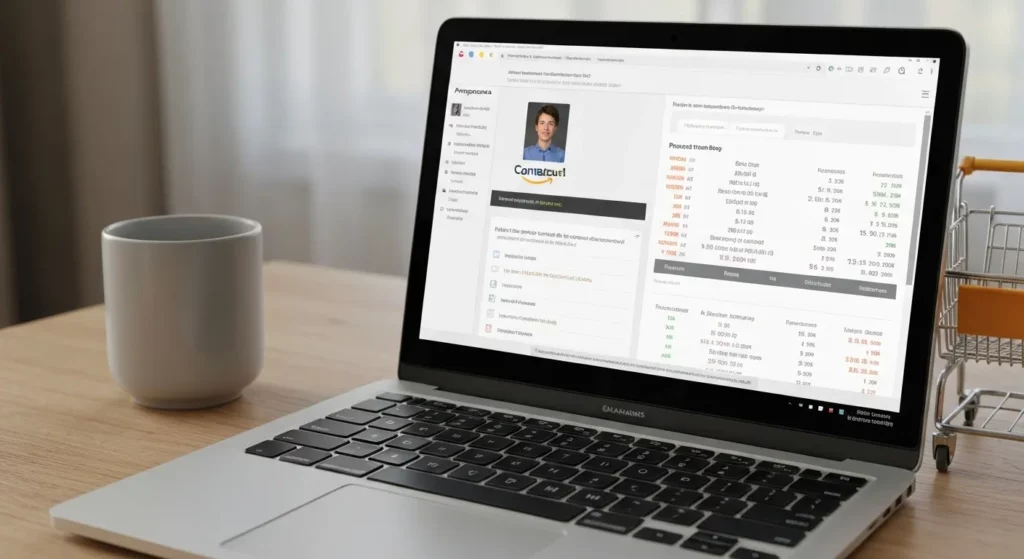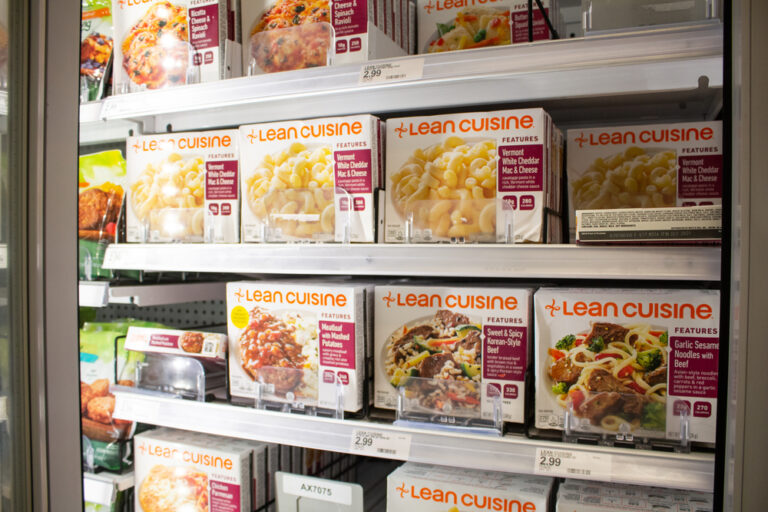Do you know how to save money on your commute? Read on and find out!
Another day, another commute, right? For millions of us, this daily ritual is an unavoidable part of life. This constant come-and-go can be physically and emotionally draining, from the stress of rush-hour traffic to the valuable time lost that could be spent with family, on hobbies, or simply relaxing. But besides the mental and temporal toll, this long-term commute can also drain your wallet in ways you might not even fully realize.
Owning and maintaining a car is practically a necessity for many, but it is certainly not cheap. When you factor in the initial purchase price, insurance premiums, regular maintenance like oil changes and tire rotations, and the inevitable unexpected repairs, the costs quickly add up. Now, include the money you have to pay at the pump, which can fluctuate wildly, and just do the math. This can be a significant financial burden for many individuals and families. To put it in perspective, a revealing survey by Bankrate shows that the average American commuter spends a staggering $8,466 per year just on the trips they have to do for work. This isn’t just a small expense; for the average person, this represents 19% of their total income! Imagine what you could do with an extra 19% of your income each year: pay down debt, build up your savings, take a dream vacation, or invest in your future.
Hopefully, the situation isn’t as bleak as it sounds. There are still many effective ways you can save money on your commute, and I am here to share them with you. I’ve been commuting already for ten years, navigating everything from city traffic to long stretches of highway, and this is how I’ve discovered these amazing tricks that will help you use that money to buy something for yourself or achieve a larger financial goal. It started for me when I calculated my own commuting expenses for a single year and was shocked by the total. That was my wake-up call to get smarter about my travel. Let’s dive in and see how you can cut back on those expenses and reclaim a significant chunk of your hard-earned money!

1. Try to use public transportation
Ok, ok I know that most of you don’t like the idea of public transportation. I get it. Common concerns often include rigid schedules, potential delays, and the “last mile” problem—how to get from the bus stop or train station to your actual workplace. Besides the fact that it is not always available in more rural areas, it can seem like a burden to not use your car. It is more comfortable to just hop in the car and hit the road, but considering all the costs involved—fuel, parking, insurance, and vehicle wear and tear—you might also want to seriously consider this idea.
In my first years of commuting, my car was literally an extension of me. It was my private bubble where I could listen to my music as loud as I wanted and sip my coffee in peace. I used to spend so much time in my car that it got weird during the weekends when I didn’t need to use it all day. The thought of coordinating with a bus schedule felt like a massive hassle that I just didn’t have time for.
All was well until one day when my car’s transmission failed, and the repair bill was astronomical. This is how I ended up using public transportation out of necessity, not choice. At first, I was grumpy about it. But after a few months of this, I realized that it was actually one of the best ways to save money on your commute. Not only was I saving hundreds of dollars a month, but I also found unexpected benefits. I could use the commute time to read, catch up on podcasts, answer emails, or just decompress. The stress of navigating traffic jams was completely gone.
So, if you live somewhere where you can catch a bus, train, or other type of ride, you can give it a try. You don’t need to commit to it full-time. Maybe you can start with a hybrid approach: drive to a “park and ride” lot and take the train into the city core. Or, just try it one or two days a week. You don’t need to do it all year, but maybe in the spring or fall when the weather is nice, it can be the perfect solution to save money on your commute. Do this one month and see if the money you save is worth it for you to continue doing this. Look into weekly or monthly passes, which often offer a steep discount over paying the daily fare.
2. Think about fuel costs
Right now, fuel prices fluctuate more than ever, and this is a challenge for many of you who want to save money on your commute. One week the price is manageable, the next it skyrockets, throwing your entire budget off balance. It is also a challenge for me right now, and due to this, I always try to do my research before going to the pump. A little planning can go a long way. Doing this will help you not leave a fortune at the gas station over the course of a year.
But what do I mean by doing your research? Well, you can start by going to the nearest gas station and checking out their rewards programs. Almost every major gas station chain has one. Anyone who travels by car in general, not just those who commute, should be part of a program like this because all the advantages it offers are too good to be missed. These programs are free to join and can offer significant savings over time. You can also stack these savings by using a credit card that offers higher cashback percentages on gas purchases.
At first, you will probably not have a lot of discounts, or at least that was my experience five years ago, but as time passes and points accumulate, you will notice a difference when you look at the balance of your account. It’s a long game, but for a daily commuter, the points add up surprisingly fast. Eventually, you’ll be redeeming points for cents-off-per-gallon discounts that make a real difference at the pump.
Cashback options, discounts, and points can all be used to get a lower price at the pump. Usually, the way it works is pretty straightforward. With every gallon of fuel that you purchase, you will accumulate points. If you are a long-distance commuter, this will definitely be a bingo for you the same way it was for me since it is the most effective way to save money on your commute. Beyond loyalty programs, your driving habits play a huge role. Avoid aggressive driving like rapid acceleration and hard braking, as this can lower your gas mileage by up to 30% on the highway. Use cruise control on long, flat stretches of road to maintain a constant speed and maximize efficiency. Furthermore, simple vehicle maintenance is key. Ensure your tires are properly inflated to the recommended PSI, as underinflated tires create more resistance and burn more fuel. Regular oil changes and clean air filters also help your engine run more efficiently, saving you gas.
Also, if you always want to get the best prices no matter what gas station you choose, your best ally by far is GasBuddy. This is an app that will let you find the cheapest gas in your vicinity using real-time, crowd-sourced data. It even has a trip-cost calculator to help you budget for longer drives. People love this app; I love this app, and I am sure that if you give it a try, you’ll find it useful. It takes the guesswork out of finding the best deal on any given day.
3. Can you get transportation benefits from your employer?
This one is not one of the ways to save money on your commute that I experienced firsthand, but I have friends who get such benefits from their jobs, and they seem quite happy with them. Don’t be shy about exploring these options; many companies offer them as a way to attract and retain talent, and you might be leaving money on the table by not asking.
There are enough employers who understand that commuting is not easy and is also not forgiving to your wallet, and because of this, many of them are open to discussing and offering you some benefits that can make your commute more pleasant, at least in terms of money. One of the most common and valuable benefits is access to pre-tax transit programs. With these, you can have money deducted from your paycheck before taxes to pay for public transit passes or vanpools. This lowers your taxable income, so you save money on your commute and on your tax bill—a true win-win.
I have two examples here. One friend of mine is more than happy with the fact that he receives parking benefits. Besides commuting, he also has tasks at the job where he needs to drive around the city, and because of this, his employer will pay for all the parking. Considering that he works in a city where daily parking can cost $20-$40, this is extremely helpful and eliminates a lot of stress related to parking and the money he would need to spend on parking if this program were not a thing. This saves him thousands of dollars a year.
The other friend doesn’t even need to use her car because the employer has a shuttle bus that picks up all the employees from that area, takes them to the job, and when it’s time to go home, it also takes everyone back. This is a fantastic perk that completely eliminates her commuting costs and allows her to relax or work during the trip. Other companies help facilitate carpools by providing a platform to connect employees who live near each other and offering preferential parking spots for those who share a ride.
As you can see, there are some options to save money on your commute; you just have to ask your employer and see if any are available for you. Check your employee handbook or talk to your HR department. When you inquire, frame it as a benefit to the company as well—these programs can improve employee morale, reduce tardiness, and support the company’s sustainability goals. Also, another popular way to save money on your commute with your employer is to take advantage of the pre-tax transit passes, which I can’t recommend enough if they are available to you.

4. Becoming a geo-commuter might be an option
This was an interesting period of my life. I had two jobs in the city, and my commute was something like 1 hour just one way, so 2 hours spent on the road in total. On bad traffic days, it could easily stretch to 3 hours. It was incredibly exhausting, draining my energy for work and my personal life. I was seriously thinking about dropping the jobs and finding something closer to home, even if it meant a pay cut.
You can imagine that it was terrible, but what piqued my interest was that I had one colleague from one of the jobs who was coming from the same place as me, but when I was leaving to go home, he never went in the same direction as me. But this is not strange. What baffled me was that he was in our town every weekend but never on the weekdays when we were working. He always looked so much more refreshed and less stressed than I did.
This is how I found out about the concept of geo-commuting. I practiced this for 10 months, and right now I don’t regret it. The story is so much longer; finally, I moved for good into the city, but this is not what’s important now. Geo-commuting was the bridge that made it possible. It’s a lifestyle choice where you live in one place during the workweek (close to your job) and return to your primary home on the weekends.
What this colleague was doing was actually smart. The money I used to spend on fuel and other travel expenses was used to rent a very small studio, which was right across the street from the place we used to work. He broke down the math for me: the cost of his tiny weekday apartment was less than what I was spending on gas, car maintenance, and the sheer value of my lost time and sanity. He told me that he was living there Monday to Friday, and then Friday after work, he would hop into the car and drive to our town, where he would spend the weekend with his family.
He suggested that I try the same, and to be honest, it was one of the best decisions of my life and also one of the best ways to save money on your commute. It transformed my weekdays. I gained back two hours every single day, which I used for exercise, hobbies, and getting more sleep. At that time, it was suitable for my lifestyle, and I can understand how this would not work for many people, especially those with young children or other obligations at home. But if you think you can survive like this, perhaps if you’re single or your partner is on board, why not give it a shot?
I consider that these are the main strategies to save money on your commute, and on this list, you can probably find something that is suitable for you. Also, if your commute is not that long, you can always try to switch your car for an e-bike or some other vehicle that can make your commute more enjoyable and a lot cheaper. E-bikes are fantastic for commutes under 10 miles; they eliminate fuel and parking costs, provide great exercise, and often allow you to bypass traffic. The initial investment can be paid back quickly in gas savings alone. The key is to analyze your specific situation and find the one or two changes that make the most sense. You don’t have to overhaul your entire life overnight. Start small, track your savings, and see how much of your hard-earned money you can put back in your pocket.
If you have any other ideas or stories, you can share them with us in the comments!
No matter what you do, it is essential to be hydrated. While on the road, don’t forget to take your water bottle with you, especially in the summer: IRON °FLASK Sports Water Bottle
You should also read: 7 Airport Tricks to Save Money on Travel














